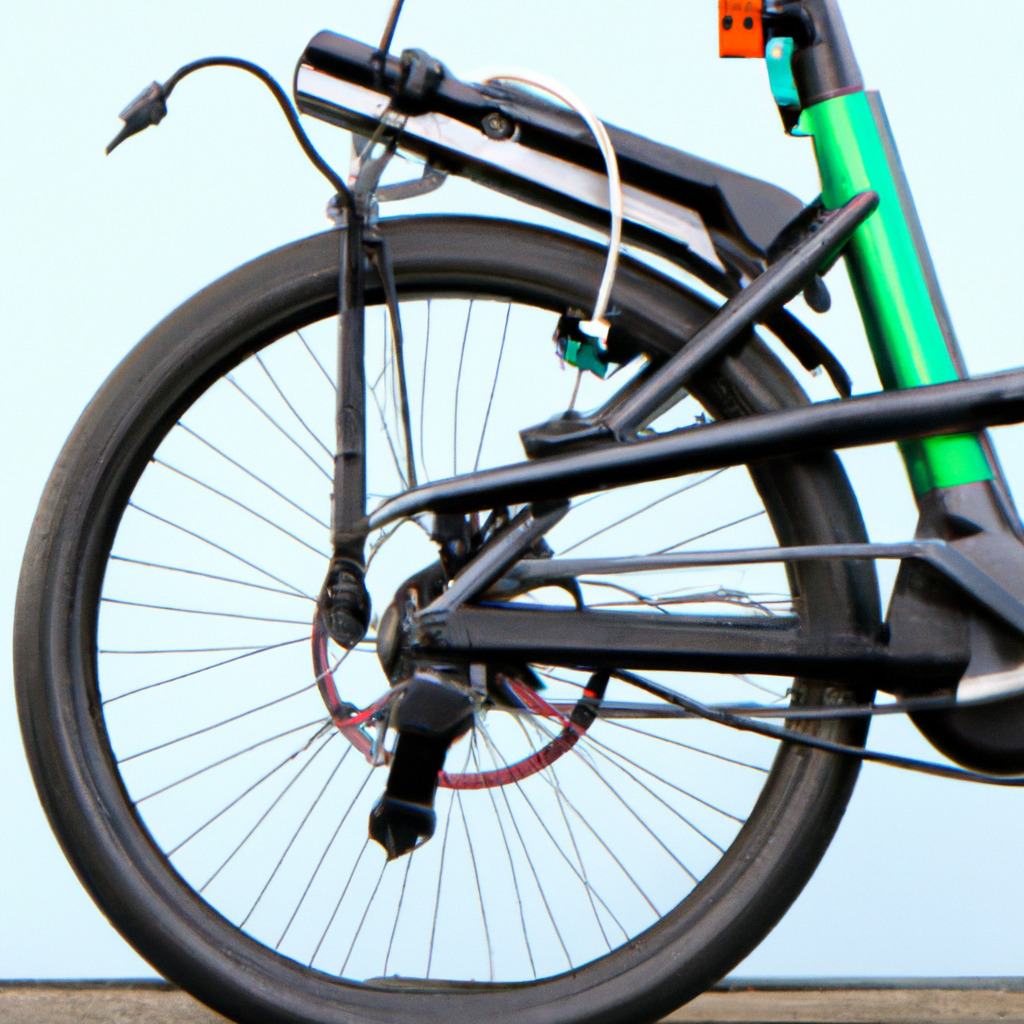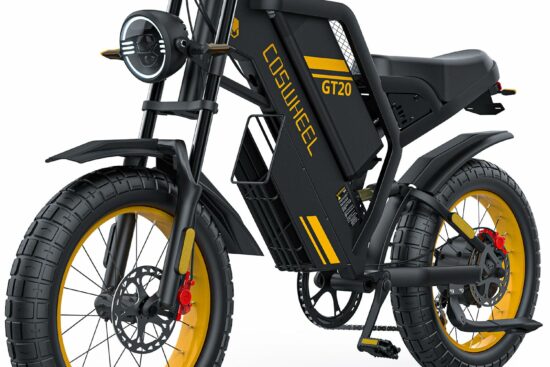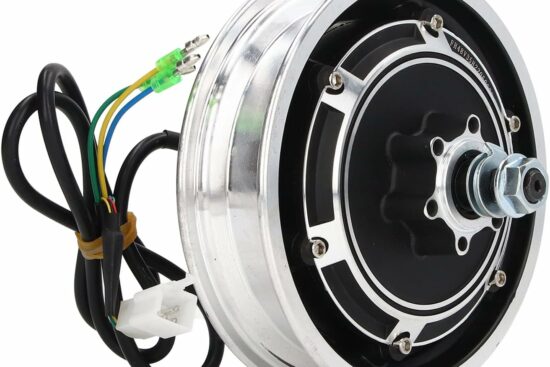
Electric bikes have become increasingly popular in recent years as a sustainable mode of transportation. As concerns about climate change and air pollution grow, the question arises: are electric bikes truly eco-friendly? This article delves into the environmental impact of electric bikes, examining their energy sources, emissions, and overall contribution to a greener future. By exploring the various aspects of electric bikes, you will gain a comprehensive understanding of their environmental benefits and the role they play in reducing carbon emissions.

1. Electric Bikes as an Alternative to Conventional Bicycles
Electric bikes, also known as e-bikes, have gained significant popularity in recent years as an alternative to conventional bicycles. With their integrated electric motor, these bikes provide an extra boost of power to aid the rider in pedaling. This innovative technology has numerous benefits, contributing to their increasing popularity and adoption as a sustainable transportation option.
1.1 Benefits of Electric Bikes
The adoption of electric bikes brings forth a multitude of benefits. Firstly, e-bikes provide a convenient and cost-effective mode of transportation, especially for short to medium distances. With electric assistance, riders can easily tackle uphill climbs and cover longer distances without feeling fatigued. This makes commuting to work or running errands more feasible, reducing reliance on cars and public transportation.
Moreover, electric bikes offer a solution to the issues of traffic congestion and limited parking spaces in urban areas. They can maneuver through traffic effortlessly, allowing riders to reach their destinations more quickly and efficiently. Additionally, e-bikes have the advantage of being able to access bike lanes and pathways, further enhancing their appeal.
1.2 Increasing Popularity and Adoption of Electric Bikes
The popularity and adoption of electric bikes have been on a steady rise, with a significant increase in sales globally. This surge can be attributed to several factors. Firstly, there has been a growing awareness and concern about the environmental impact of traditional modes of transportation, such as cars and motorcycles. Electric bikes offer a greener alternative, emitting fewer emissions and consuming less energy.
Furthermore, advancements in battery technology have resulted in more affordable and efficient electric bike models. The increased range and improved battery life have addressed the concerns of riders regarding potential limitations. As a result, consumers are more willing to switch to electric bikes as a viable transportation option.
1.3 Electric Bikes as a Sustainable Transportation Option
Electric bikes play a crucial role in achieving sustainable transportation systems. By reducing reliance on fossil fuel-powered vehicles, they contribute to lowering greenhouse gas emissions and air pollution. This is particularly beneficial in densely populated urban areas where air quality is a significant concern.
Moreover, electric bikes promote a more active lifestyle and reduce sedentary behavior. While traditional bicycles offer exercise benefits, the added electric assistance of e-bikes allows a broader range of individuals to engage in physical activity. This can have potential long-term health benefits and contribute to a more sustainable and healthier society.
2. Energy Consumption and Efficiency of Electric Bikes
Understanding the energy consumption and efficiency of electric bikes is essential in assessing their overall environmental impact.
2.1 Power Source: Battery vs. Human Energy
Electric bikes rely on two primary power sources – the battery and human energy. The battery provides the electric assistance, while the rider’s pedaling motion generates the kinetic energy required to propel the bike forward. The combination of these power sources makes electric bikes a highly efficient mode of transportation.
Compared to conventional bicycles, electric bikes allow riders to travel longer distances with less effort, thanks to the assistance provided by the electric motor. This energy-efficient approach reduces the strain on the rider and promotes a sustainable mode of transportation.
2.2 Efficiency of Electric Bike Motors
The efficiency of the electric motor used in e-bikes is a crucial factor in determining their overall energy consumption. Modern electric bikes employ brushless DC motors, which are highly efficient and have minimal energy losses. These motors convert electrical energy from the battery into mechanical energy with minimal waste in the form of heat.
Furthermore, advancements in motor technology, such as regenerative braking systems, allow the motor to recover and store energy that would otherwise be dissipated as heat during braking. This energy can then be utilized to provide additional power during acceleration, further enhancing the efficiency of electric bikes.
2.3 Comparing Energy Consumption between Electric Bikes and Other Modes of Transportation
When compared to traditional modes of transportation such as cars or motorcycles, electric bikes consume significantly less energy. The higher efficiency of electric bike motors and the ability to utilize human energy for propulsion make them a more sustainable option.
Additionally, the energy required to charge the battery of an electric bike is relatively low compared to the energy consumed by a car during the same distance. This reduced energy consumption not only contributes to lower operating costs for riders but also reduces the overall environmental impact associated with transportation.
3. Emissions and Air Pollution
One of the key advantages of electric bikes is the reduced emissions and air pollution associated with their use.
3.1 Direct Emissions from Electric Bikes
Electric bikes produce zero direct emissions during operation since they do not rely on fossil fuels for propulsion. This eliminates the release of harmful pollutants such as carbon monoxide, nitrogen oxides, and particulate matter into the atmosphere, resulting in improved air quality in urban areas.
3.2 Indirect Emissions from Battery Production and Disposal
While electric bikes themselves produce no direct emissions, there are indirect emissions associated with the production and disposal of their batteries. The manufacturing process of lithium-ion batteries used in electric bikes requires energy and resources, which may result in the emission of greenhouse gases and other pollutants.
However, it is essential to consider the lifecycle analysis of electric bikes to understand the net environmental impact. The indirect emissions from battery production are significantly outweighed by the emissions saved during the operational phase of electric bikes, making them a greener alternative to conventional modes of transportation.
3.3 Comparison of Emissions with Internal Combustion Engine Vehicles
When compared to internal combustion engine vehicles, electric bikes have a significantly lower emissions profile. Traditional vehicles emit substantial amounts of greenhouse gases, including carbon dioxide, which contribute to climate change. Electric bikes, on the other hand, have a minimal carbon footprint and play a vital role in reducing overall emissions from the transportation sector.
4. Lifecycle Analysis and Environmental Impacts
A comprehensive assessment of the lifecycle of electric bikes is necessary to evaluate their environmental impacts.
4.1 Extraction and Production of Raw Materials
The extraction and production of raw materials required for electric bikes, such as metals for frames and lithium for batteries, have environmental implications. These processes can result in habitat destruction, water pollution, and carbon emissions.
However, the environmental impact of the extraction and production phase can be mitigated through sustainable sourcing practices and the use of recycled materials. Additionally, advancements in battery technology are focused on reducing the reliance on rare earth metals, further minimizing the environmental impact of electric bikes.
4.2 Manufacturing Process of Electric Bikes
The manufacturing process of electric bikes encompasses various stages, including frame fabrication, motor assembly, and battery production. While these processes require energy and resources, the environmental impact can be minimized through energy-efficient manufacturing techniques and the use of eco-friendly materials.
Adopting sustainable manufacturing practices, such as reducing waste and optimizing production processes, can further enhance the environmental credentials of electric bikes.
4.3 Evaluating the Environmental Impacts throughout the Lifecycle
Taking a holistic approach to evaluate the environmental impacts throughout the lifecycle of electric bikes is crucial. While there are environmental implications associated with the extraction and production of raw materials, as well as the manufacturing process, these impacts are outweighed by the significant environmental benefits during the operational phase of electric bikes.
The emissions savings, energy efficiency, and reduction in air pollution make electric bikes a more environmentally responsible choice compared to conventional forms of transportation.

5. Use of Resources and Waste Generation
Assessing the use of resources and waste generation is important when evaluating the environmental impact of electric bikes.
5.1 Land Use for Electric Bike Infrastructure
The installation of electric bike infrastructure, such as charging stations and parking facilities, may require land use. However, the land use footprint of electric bike infrastructure is significantly smaller compared to that of car infrastructure, such as roads and parking lots. This makes electric bikes a more sustainable option, particularly in densely populated urban areas where space is limited.
5.2 Battery Production and Resource Consumption
The production of lithium-ion batteries for electric bikes requires the extraction and processing of natural resources. These resources, such as lithium and cobalt, are not unlimited and must be managed responsibly. However, advancements in battery technology are focused on reducing the reliance on rare and finite resources, promoting a more sustainable approach to electric bike production.
5.3 E-Waste Generation and Recycling Efforts
As with any electronic product, electric bikes contribute to electronic waste, or e-waste, when they reach the end of their life cycle. Proper disposal and recycling of e-waste are essential to prevent pollution and recover valuable materials. Manufacturers and policymakers should prioritize the development of recycling programs and initiatives to ensure the responsible disposal and recycling of electric bikes and their components.
6. Noise and Visual Pollution
Electric bikes have distinct advantages over traditional modes of transportation when it comes to minimizing noise and visual pollution.
6.1 Noise Reduction of Electric Bikes
Compared to internal combustion engines, electric bike motors produce substantially less noise during operation. This reduction in noise pollution contributes to a quieter and more pleasant urban environment, particularly in residential areas and parks. By choosing electric bikes over conventional vehicles, individuals can help mitigate noise pollution and create a more peaceful setting.
6.2 Impact on Visual Aesthetics and Scenic Environment
Electric bikes have a minimal visual impact on the landscape compared to cars or motorcycles. Their sleek design and compact size allow for easier integration into the urban environment without compromising the aesthetic appeal of the surroundings. This feature is particularly valuable in scenic areas, where preserving the natural beauty of the landscape is of utmost importance.
6.3 Comparison with Other Transportation Modes
When compared to other transportation modes, such as cars or motorcycles, electric bikes have a distinct advantage in terms of noise and visual pollution. The quiet operation and unobtrusive nature of electric bikes make them an attractive choice for individuals looking to minimize their impact on the environment, both visually and acoustically.

7. Influence on Physical Activity and Health
Electric bikes have the potential to positively influence physical activity levels and improve overall health.
7.1 Promoting Active Commuting
Electric bikes encourage individuals to engage in active commuting, which involves using active modes of transportation such as cycling or walking instead of solely relying on motorized vehicles. This promotes physical activity and contributes to a healthier lifestyle. The electric assistance provided by e-bikes allows a broader range of individuals, including those with physical limitations, to participate in active commuting.
7.2 Potential Health Benefits of Electric Bikes
Regular physical activity, such as riding an electric bike, has numerous health benefits. It helps improve cardiovascular fitness, build muscle strength, and enhance mental well-being. The electric assistance of e-bikes allows individuals to gradually increase their physical activity levels, thus minimizing the barrier to entry for those who may not be accustomed to regular cycling.
7.3 Balancing Physical Activity with Electric Bike Assistance
One concern raised regarding electric bikes is the potential decrease in physical activity due to the electric assistance provided. However, studies have shown that while electric bikes may reduce the effort required for cycling, they still provide a substantial amount of physical activity. The rider can choose to adjust the level of electric assistance, striking a balance between exercise and ease of travel.
8. Infrastructure and Policy Considerations
The development of infrastructure and the implementation of supportive policies are crucial to the successful integration of electric bikes into sustainable transportation systems.
8.1 Supporting Electric Bike Infrastructure
To promote the use of electric bikes, it is essential to develop adequate infrastructure. This includes the provision of dedicated bike lanes, charging stations, and secure parking facilities for electric bikes. These infrastructure investments not only facilitate a safe and convenient riding experience but also encourage more individuals to adopt electric bikes as a viable transportation option.
8.2 Integration with Public Transportation
Integrating electric bikes with public transportation systems can further enhance their accessibility and usability. This can be achieved by providing designated spaces for electric bikes on buses or trains, as well as offering incentives or discounts for individuals who combine electric bike usage with public transit. Such integration promotes the concept of intermodality and encourages a more sustainable and efficient transportation system.
8.3 Government Policies and Incentives for Electric Bikes
Government policies and incentives play a significant role in promoting the adoption of electric bikes. These can include financial incentives, such as tax credits or subsidies, to make electric bikes more affordable for consumers. Additionally, policymakers should prioritize the development of regulations and guidelines that support the integration of electric bikes into existing transportation infrastructure, ensuring their safe and seamless integration into urban environments.

9. Consumer Behavior and Lifestyle Changes
Understanding consumer behavior and potential lifestyle changes is important in assessing the overall impact and potential future of electric bikes.
9.1 Factors Affecting Consumer Adoption of Electric Bikes
Several factors influence consumer adoption of electric bikes. These include price, range, availability of charging infrastructure, and the perception of electric bikes as a legitimate mode of transportation. Addressing these factors through the development of affordable models, an expanded charging network, and increased awareness campaigns can further accelerate the adoption of electric bikes.
9.2 Potential Shifts in Travel Behavior
The widespread adoption of electric bikes has the potential to lead to significant shifts in travel behavior. As individuals switch from traditional motorized vehicles to electric bikes, the demand for fossil fuels and associated emissions would decrease. This shift could also lead to a reduction in traffic congestion, optimized road network utilization, and improvements in overall transportation efficiency.
9.3 Implications on Urban Planning and Mobility
The adoption of electric bikes has implications for urban planning and mobility. Cities and urban areas must consider the integration of electric bikes into transportation planning, including the provision of adequate infrastructure, such as bike lanes and charging stations. Incorporating electric bikes as an integral component of sustainable mobility plans can lead to more efficient and livable cities.
10. Conclusion
Electric bikes have emerged as an environmentally friendly and sustainable transportation option. The benefits of electric bikes, including reduced emissions, energy efficiency, and positive impacts on physical activity and health, make them a compelling choice for individuals and communities alike.
By embracing electric bikes as an alternative to conventional modes of transportation, individuals can contribute to a greener and more sustainable future. Moreover, the integration of electric bikes into transportation systems requires supportive policies, infrastructure development, and changes in consumer behavior. With continued efforts in these areas, electric bikes can play a vital role in fostering sustainable transportation systems and improving the overall quality of urban environments.
In conclusion, the environmental impact of electric bikes is undeniably positive, making them an attractive and eco-friendly option for modern transportation needs. As technology continues to advance and awareness grows, electric bikes are poised to become an integral part of the sustainable transportation landscape, providing an efficient, clean, and healthy mode of travel for individuals and communities around the world.





















